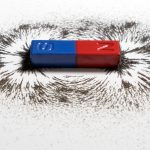Video Guide to Magnets
When it comes to magnets and magnetism, most people have a general sense of what the two are. However, many don’t know or are just really intrigued by the overall process needed to create these items. Whether you know nothing about magnet creation or you want to know as much as possible (we like you) we’re exploring how magnets are created and how they work below! If you’re not feeling like reading, go straight to the videos to watch these concepts explained visually.
How Magnets are Made
To begin, a sand mold is created for the shape of the magnet. The mold is then placed into a heating device. After heating, the mold will be doused in flames due to the flammable nature of the gasses that are used to chemically harden the sand. The mold is then cracked open so that it is ready to mold the magnet itself.
Most magnets are created from a mixture of copper, cobalt, silver, nickel, sulfur, and other metals. These materials are melted down into a molten “soup” where they are later added to fill the sand molds. After the mixture is poured and cooled, the mold is once again separated from the now formed magnet and is taken to be magnetized.
Many believe that magnets are automatically magnetic - think again! The desired magnets are covered in a silica sand and placed into an electric furnace to apply a charge to the metal. This will give the magnets their base magnetism. Finally, the magnets are cleaned up and smoothed around the edges before one last dip in an electromagnetic charge machine to finalize the magnetism process. Here’s a video of the overall process if you’d like a visual!
How Do Magnets Actually Work?
To begin, let’s acknowledge how electricity and magnetism coincide -- magnetic fields are what electrical fields turn into when an electrically charged object starts moving. The magnetic behavior of any object is influenced by atoms, with each proton and electron being practically a tiny magnet. The atom is a combination of positively charged protons and negatively charged electrons which determines their charge. Once the positive and negative charges interact with each other, magnetism is achieved. Here’s another visual representation to show the effect.
Keep Current with Apex Magnets
Craving more magnetic facts? We are constantly publishing new content to our blog page on our website. You can view all past blogs and keep current with our newest pieces!

